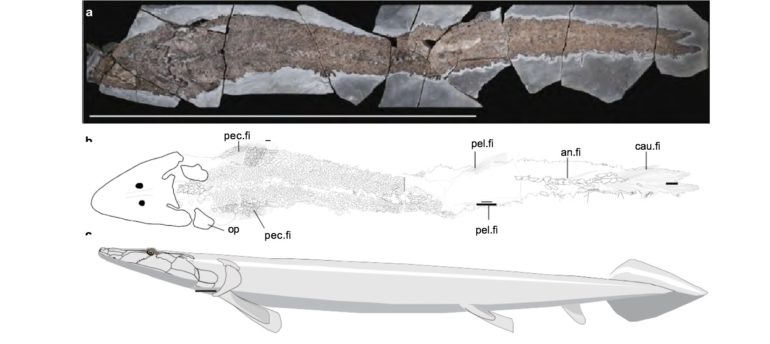An ancient Elpistostege fish fossil found in Miguasha, Canada has revealed new insights into how the human hand evolved from fish fins.
An international team of palaeontologists from Flinders University in Australia and Universite du Quebec a Rimouski in Canada have revealed the fish specimen, as described in the journal Nature, has yielded the missing evolutionary link in the fish to tetrapod transition, as fish began to foray in habitats such as shallow water and land during the Late Devonian period millions of years ago.
This complete 1.57 metre long fish shows the complete arm (pectoral fin) skeleton for the first time in any elpistostegalian fish. Using high energy CT-scans, the skeleton of the pectoral fin revealed the presence of a humerus (arm), radius and ulna (forearm), rows of carpus (wrist) and phalanges organized in digits (fingers).
“Today we announce in the journal Nature our discovery of a complete specimen of a tetrapod-like fish, called Elpistostege, which reveals extraordinary new information about the evolution of the vertebrate hand,” says Strategic Professor in Palaeontology at Flinders University Professor John Long.
“This is the first time that we have unequivocally discovered fingers locked in a fin with fin-rays in any known fish. The articulating digits in the fin are like the finger bones found in the hands of most animals.”
“This finding pushes back the origin of digits in vertebrates to the fish level, and tells us that the patterning for the vertebrate hand was first developed deep in evolution, just before fishes left the water.”



